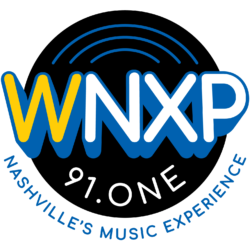Artists who deliberately and publicly claim LGBTQIA+ identities and country or roots affiliations exist across a rich spectrum. Some performers, like autoharp-strumming drag queen Trixie Mattel and piano bar expat James Wilson of Paisley Fields, build their flamboyant identities just as much around the exaggerated cowpoke campiness of their stage wear and the winking humor in their demeanors as their stylistic sensibilities.
Others, like the duo Tina & Her Pony and the vocally trained singer-songwriter Eli Conley, sketch characters whose identities defy heterosexual or cisgender norms in compelling detail. Though their archetypal work together has mostly leaned toward folk-rock, the Indigo Girls have long spun stories of southern queer lives, and a new one, “Country Radio,” written and sung by the duo’s Emily Saliers, paints a portrait of a smalltown, gay fan for whom mainstream country songs are a source of both fantasy and exclusion.
Loamlands, the musical vehicle of nonbinary North Carolina songwriter Kym Register, has in its repertoire a somber lament of the historic, regional slaying of two gay men. Kevin Thornton, the nimble imagination behind Indiana Queen, translated the anxious yearning in his songs into a visual album that treats male bodies with wistful admiration and desire and conveys the melancholy of finding a certain kind of success just out of reach in Nashville.
There are the subtle yet significant storytelling choices of Mercy Bell, who captures uneasy recollections of coming of age and coming out. Kristin Davidson and Carolyn Phillips, of the acoustic duo Hardened and Tempered, gently conjure wanderlust in the wide-open western spaces of cowboy mythology. Ty Herndon flipped the gender of the pronouns in a rerecording of one of his ’90s country hits. Brandon Stansell favors contemporary country-pop production and ponders small-town identity and youthful rejection from a personalized, openly emotional vantage, while Cameron Hawthorn draws on a disco-influenced, modern country era to depict line-dancing lust in one of his videos
There’s rich variety, too, in the ways that performers shape melodies and use their voices, sometimes decentering or dissolving rigid, gendered binaries. Mary Gauthier and the Indigos’ Amy Ray have long been emblems of visceral expression, toughened witnesses to suffering at the social margins who often sing in stern, lower registers. Sarah Shook and Jaime Wyatt, who’ve more recently staked out space at alt-country’s punkish and outlaw poles, respectively, shape their songs around hard-living antihero personas stoically surveying damage they’ve wrought, while Cindy Emch, of the Secret Emchy Society takes a brassy, barroom belting approach to roguery.
Karen Pittelman, front woman of Karen & the Sorrows, sings disarmingly tender tunes with an artful sweetness that matches the gussied-up, vintage country look she’s cultivated. Waylon Payne, pedigreed son of ’70s country star Sammi Smith, brings a delicate, poetically unguarded touch to the role of the downhome troubadour. Alex Caress of Little Bandit and Wily Gaby of Goldenchild explore balladeer vulnerability and melodrama by swelling into high notes and emoting with sly finesse.
Then there are highly accomplished instrumentalists, singers and percussive dancers, like Joe Troop, Justin Hiltner, Jake Blount, Tatiana Hargreaves, Amythyst Kiah, Sam Gleaves, Brandon Godman, Nic Gareiss, Willi Carlisle, Tyler Hughes and the duo Cathy Fink & Marcy Marxer, whose work expands notions of musical tradition with their virtuosity, historical knowledge, compositional contributions and collaborations. They were either born into or gravitated toward folk, bluegrass, old-time and string band communities, many of them in Appalachia, made up of family bands, festivals, fiddle camps, jam sessions and serious, often academic, study of established instrumental techniques, storehouses of standard songs and cultural lineages.
These music-makers certainly don’t look or sound alike, nor do they all share the same aims and aspirations. They also have wildly different relationships to musical and cultural conventions, popular lineages and place; some came up in rural hamlets, small towns or modest cities in the South or Midwest that they’ve chosen to either remain in or escape—to the industry stronghold of Nashville, to the cosmopolitan coasts—and others picked up the music as city dwellers. There are those who’ve worked to claim their spaces in well-established music communities through faithful participation and mastery of their canons and customs, and those who place their LGBTQIA+ identities front and center, emphasizing the specifics of their marginalized vantage points, seeking to intervene in convention and radically revise historical narratives and viewing their music as a form of activism.
The playlist that follows isn’t intended to be exhaustive. You won’t find some of the usual suspects that feature in brief intros to queer country—not the once obscure, now celebrated pioneering ’70s outsider Lavender Country or k.d. lang or “Follow Your Arrow.” What you will find are tracks and videos—the better to fill in the picture of performing and presentation styles and visual theater—from a cross section of LGBTQIA+ artists who call countrified aesthetics and cultures their own.
